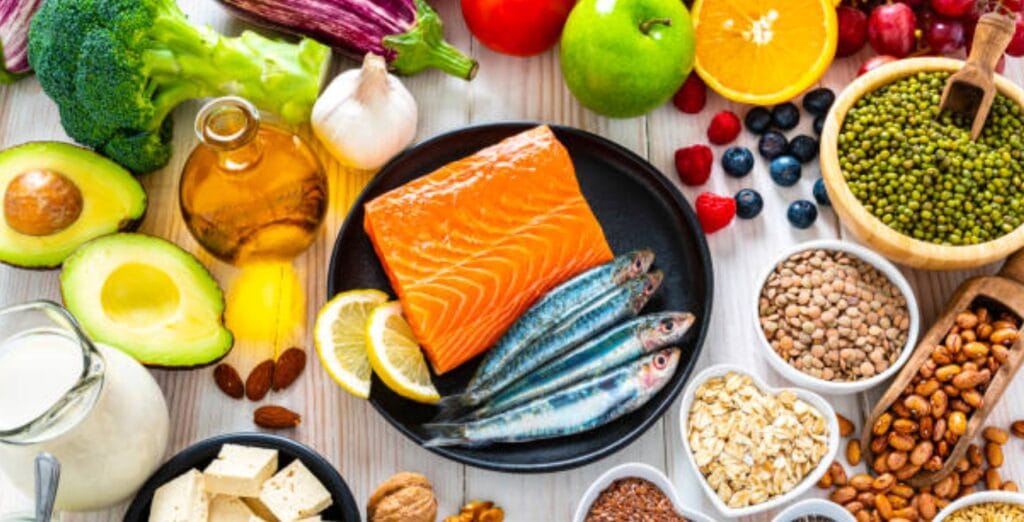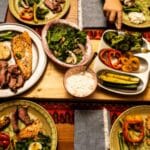The ketogenic (keto) diet is incredibly popular for its effectiveness in promoting weight loss, improving mental clarity, and increasing energy levels. But one of the most common challenges that people face when starting a keto diet is figuring out how to get enough fat.
In this comprehensive guide, we will break down the basics of the keto diet, explain the importance of fat, and provide you with easy, practical tips to ensure you’re getting enough fat in your daily meals. Whether you’re new to the keto diet or a seasoned keto enthusiast, this guide will help you navigate the high-fat, low-carb lifestyle with confidence.
What Is the Keto Diet?
The ketogenic diet is a low-carbohydrate, high-fat diet that helps your body enter a metabolic state called ketosis. In ketosis, your body shifts from using carbohydrates (glucose) as its primary source of energy to burning fat for fuel. To reach and maintain ketosis, you need to drastically reduce your carb intake (usually to less than 50 grams of net carbs per day) and increase your fat consumption.
Your typical macronutrient breakdown on keto might look something like this:
- Fat: 70-75%
- Protein: 20-25%
- Carbohydrates: 5-10%
In this guide, we’ll focus on the fat portion of the diet and how you can successfully hit that high percentage every day.
Why Is Fat Important on Keto?
Fat is the cornerstone of the keto diet. Without enough fat, your body will struggle to stay in ketosis, which can hinder your progress toward weight loss or other health goals. Here are a few reasons why getting enough fat is crucial:
- Fuel for Your Body: Since carbs are drastically reduced on the keto diet, fat becomes your main source of energy. Without enough fat, you may feel tired, sluggish, and irritable.
- Helps You Stay Satisfied: Eating enough fat keeps you feeling full and satisfied, reducing cravings for snacks or carb-heavy foods.
- Promotes Ketosis: Fat helps your body produce ketones, the molecules that are used for energy when your body is in ketosis.
- Supports Nutrient Absorption: Certain vitamins (like A, D, E, and K) are fat-soluble, meaning they need fat to be absorbed and used by your body.
Now that you understand why fat is so important on the keto diet, let’s dive into some practical ways to ensure you’re getting enough of it.
How to Get Enough Fat on the Keto Diet: Easy Tips
1. Add Healthy Fats to Every Meal
The simplest way to increase your fat intake is to add healthy fats to every meal. This doesn’t mean you need to slather everything in butter (although butter is great on keto!). Here are a few ideas for incorporating more fat into your meals:
- Cook with fats: Use oils like coconut oil, olive oil, avocado oil, and grass-fed butter when frying, sautéing, or roasting your food.
- Top with fats: Add avocado slices, olives, or a dollop of sour cream to your meals. Drizzle extra olive oil over salads or vegetables.
- Use fatty sauces: Make creamy sauces and dressings using heavy cream, mayonnaise, or full-fat yogurt. Hollandaise sauce, blue cheese dressing, or aioli are excellent choices.
- Snack on fatty foods: Enjoy keto-friendly snacks like cheese, nuts, seeds, and pork rinds to boost your fat intake between meals.
2. Prioritize Fatty Cuts of Meat
Protein is important on keto, but you want to choose cuts of meat that are higher in fat to meet your daily fat needs. Here are some good options:
- Beef: Look for fatty cuts like ribeye, brisket, ground beef (80% lean or less), and short ribs.
- Pork: Choose pork belly, bacon, sausage, and pork shoulder.
- Poultry: Opt for dark meat (thighs, drumsticks) instead of lean white meat (breasts). Keep the skin on for added fat.
- Fish: Fatty fish like salmon, mackerel, and sardines are rich in omega-3 fatty acids, which are essential for heart health.
3. Incorporate Dairy Products
Full-fat dairy products are a delicious and easy way to increase your fat intake on keto. Some options to include in your meals are:
- Heavy cream: Add to coffee, sauces, or keto desserts.
- Cheese: Snack on cheese, melt it over vegetables, or add it to scrambled eggs.
- Butter: Use butter in cooking or as a topping for steamed veggies or keto bread.
- Full-fat yogurt: Choose unsweetened, full-fat Greek yogurt or plain yogurt. Add a sprinkle of seeds, nuts, or low-carb berries for flavor.
4. Eat Plenty of Avocados and Olives
Avocados and olives are both excellent sources of healthy fats, particularly monounsaturated fats, which are great for heart health. Here’s how you can use them:
- Avocados: Add avocado slices to salads, sandwiches (using lettuce wraps), or burgers. Make guacamole or use mashed avocado as a spread.
- Olives: Snack on a handful of olives or use olive oil as a base for dressings and marinades.
Both avocados and olives are versatile, delicious, and packed with healthy fats that will help you reach your keto goals.
5. Use Keto-Friendly Fats and Oils
One of the easiest ways to boost your fat intake is by using the right oils and fats in cooking and baking. Here are some of the best keto-friendly fats:
- Coconut oil: Rich in medium-chain triglycerides (MCTs), which are easily converted into ketones by the liver.
- Olive oil: A great source of monounsaturated fats, perfect for salad dressings, drizzling over veggies, or light sautéing.
- Butter or ghee: Both are excellent for cooking, baking, and spreading over foods.
- MCT oil: This oil is derived from coconut oil and is easily digestible, making it perfect for adding to coffee or smoothies for a quick fat boost.
Avoid vegetable oils like canola, soybean, or sunflower oil, as they are high in omega-6 fatty acids, which can cause inflammation.
6. Snack on Fat Bombs
Fat bombs are small, energy-packed snacks specifically designed to help you meet your fat needs on keto. They’re typically made from a combination of healthy fats like coconut oil, butter, cream cheese, and nut butters. You can find countless recipes for both sweet and savory fat bombs.
Sweet fat bomb ideas:
- Chocolate coconut fat bombs
- Peanut butter and cream cheese fat bombs
- Lemon coconut fat bombs
Savory fat bomb ideas:
- Bacon and cream cheese fat bombs
- Jalapeño popper fat bombs
- Pesto and Parmesan fat bombs
Fat bombs are a fun, tasty way to add more fat to your diet while keeping carbs low.
7. Use Nuts and Seeds in Moderation
Nuts and seeds are high in fat, but they also contain some carbohydrates, so it’s important to consume them in moderation. Here are some of the best low-carb, high-fat options:
- Macadamia nuts
- Pecans
- Brazil nuts
- Chia seeds
- Flaxseeds
- Hemp seeds
You can snack on a small handful of nuts, add seeds to your salads, or use nut butter as a spread for your keto-friendly bread or vegetables.
8. Add Coconut-Based Products
Coconut-based products are excellent for increasing your fat intake on the keto diet. Here’s how you can incorporate them into your meals:
- Coconut oil: Use in cooking, baking, or add to your coffee for an energy boost.
- Coconut cream: Add to curries, soups, or desserts for a creamy, fatty touch.
- Coconut milk: Use full-fat canned coconut milk in place of dairy milk in smoothies or recipes.
Coconut products are rich in MCTs, making them perfect for anyone following a keto lifestyle.
How Much Fat Do You Need on Keto?
Now that you know how to increase your fat intake, the next question is: how much fat do you actually need?
There’s no one-size-fits-all answer, as the amount of fat you need depends on your individual goals, weight, activity level, and macronutrient targets. However, a general guideline is to aim for around 70-75% of your daily calories to come from fat.
Here’s an example to illustrate:
- If your target is 2,000 calories per day, 70-75% of those calories should come from fat.
- 70% of 2,000 calories is 1,400 calories.
- Since fat has 9 calories per gram, divide 1,400 by 9 to get approximately 155 grams of fat per day.
You can use a keto macro calculator to get a more personalized recommendation based on your body and goals.
Common Mistakes to Avoid
While getting enough fat is important on keto, it’s also easy to make a few common mistakes. Here’s what to watch out for:
- Overeating protein: Too much protein can be converted into glucose through a process called gluconeogenesis, which may kick you out of ketosis. Stick to moderate protein intake.
- Choosing unhealthy fats: Focus on healthy fats like avocado, olive oil, and fatty fish. Avoid processed fats like trans fats and highly processed vegetable oils.
- **Ignoring nutrient density:** While fat is key on keto, it’s important to also eat nutrient-dense foods like leafy greens, non-starchy vegetables, and quality sources of protein to ensure you’re getting essential vitamins and minerals.
How to Get Enough Fat on a Keto Diet
Achieving success on the keto diet boils down to ensuring you’re getting enough fat in your meals. By incorporating healthy fats, choosing fatty cuts of meat, using dairy products, and snacking on fat-rich foods like avocados, nuts, and fat bombs, you can easily hit your fat goals and stay in ketosis.
Remember to prioritize quality fats, avoid common pitfalls, and listen to your body. The ketogenic diet can be a powerful tool for transforming your health, and with these tips, you’ll be well on your way to reaching your goals. Happy keto-ing!


